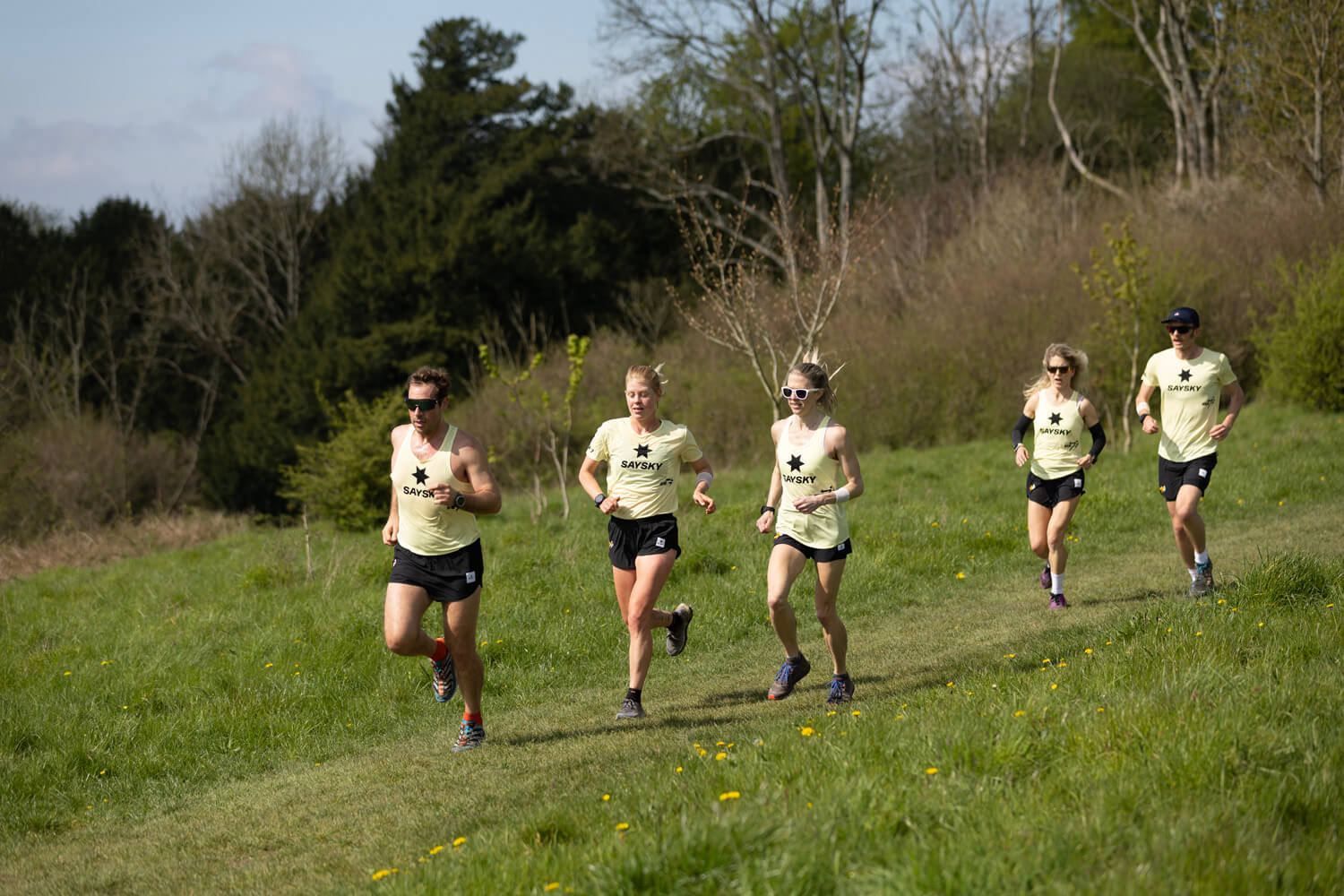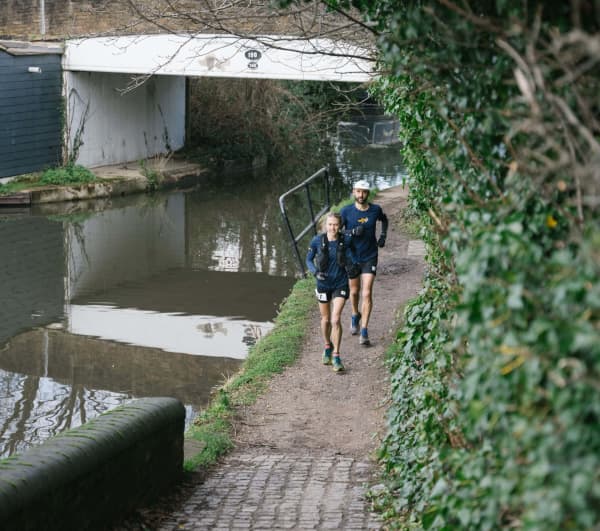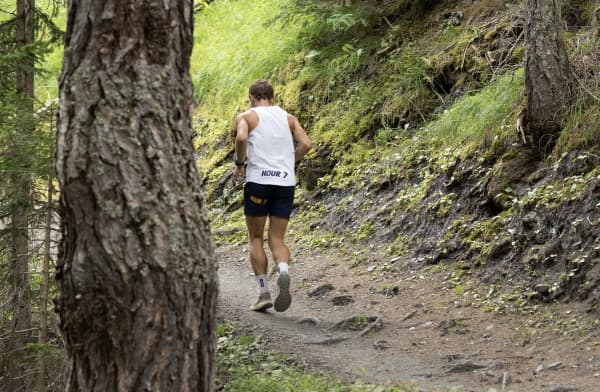Introduction
When it comes to distance running, the summer (or spring) heat can be a formidable opponent. Whether you're training for an ultra-marathon or participating in a race, maintaining a cool body temperature is crucial for peak performance and avoiding heat-related illnesses.
In this article, we'll explore a variety of cooling techniques that distance runners can employ during training or events to stay refreshed, including cold water immersion, ice bandanas, cold drinks, and more.
Read on to discover your ultimate toolkit for beating the heat and maximizing your running potential in the sunshine.
Heat acclimation
Our body has built-in techniques for staying cool in hotter conditions, but it needs a bit of a warning before being thrown into the fire. We will have another article on how to acclimate for hot weather training and racing, but once you have acclimated the following techniques will help you race at an even higher level in the sunshine.
Cold Water Soak
Nothing revitalizes an overheated body like a refreshing plunge into cold water. Depending on the event, aid stations along the course might allow you to take advantage of the opportunity to douse yourself with water from sponges or spray bottles.
Alternatively, some races even provide misting stations or cooling pools for runners to immerse themselves in, offering some relief and rejuvenation.
It might even be a European drinking fountain or stream alongside the course that allows an athlete to fully submerge and take 30-60 seconds of full body cooling to allow you to keep moving forward. Just see the top US runners at Western States 100 miler spend some time in the Rucky Chucky River Crossing.
Ice Bandanas
Wearable ice bandanas that allow you to add ice into a pocket are a popular choice among distance runners.
Before your race, you could even freeze a normal bandana or neck gaiter overnight, and wear it around your neck or over your head during the event. As the ice slowly melts, it will cool the blood vessels in your neck and provide a continuous cooling effect.
If you do have a purpose built (or homemade) bandana or neckerchief with a pocket for ice then don't forget to reapply the bandana with fresh ice from aid stations or your crew as needed.
Cold Drinks
Hydration is paramount for runners, and sipping on cold beverages can provide a dual benefit of replenishing fluids while cooling your body. Opt for cold water or sports drinks with electrolytes to maintain hydration and replace essential minerals lost through sweat.
Consider carrying a handheld bottle with an insulated sleeve or, if carrying a hydration pack, investing in one with an integrated cooling system to keep your drinks refreshingly chilled throughout the race. Just be aware that any hydration pack can act like a warm vest once the ice has melted.
When using really cold drinks it is best to test in training before, as it can have an adverse impact on your digestive system. If you do need to stop for GI issues then make sure you’re in the shade when you do.
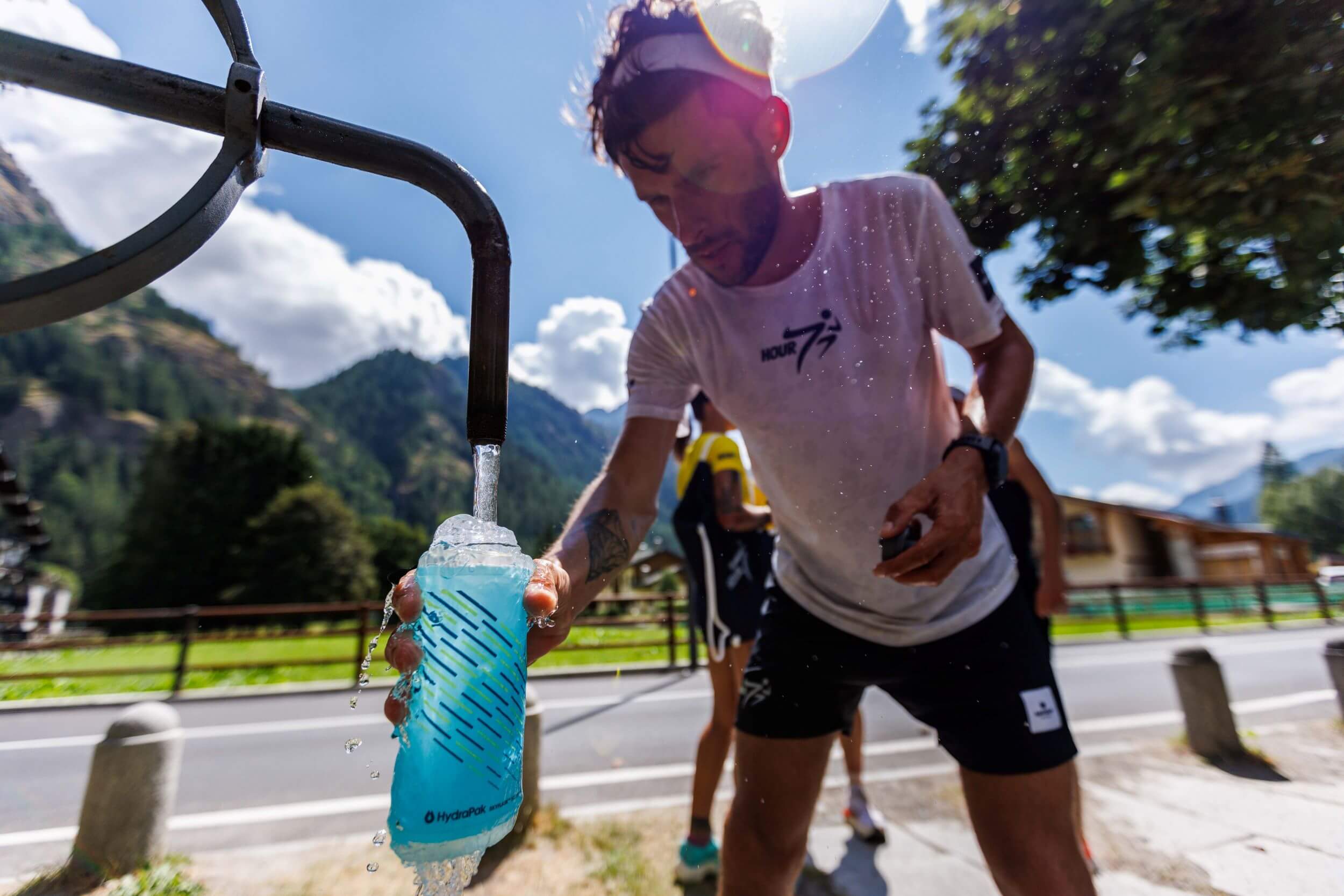
(Hour 7 Athlete Manager Robbie Britton utilising the local cold water source is Gressoney. Photo: Dave MacFarlane)
Cooling Apparel
Choose your running attire wisely to optimize cooling during races. Look for lightweight, moisture-wicking fabrics that promote evaporation and allow air circulation such as the SAYSKY Flow collection that is built for racing in the hottest conditions.
Don't underestimate the power of a well-ventilated hat or visor to shield your face from the sun, but again remember it is another layer that you will need to keep wet with cold water to continue the cooling of the extra material.
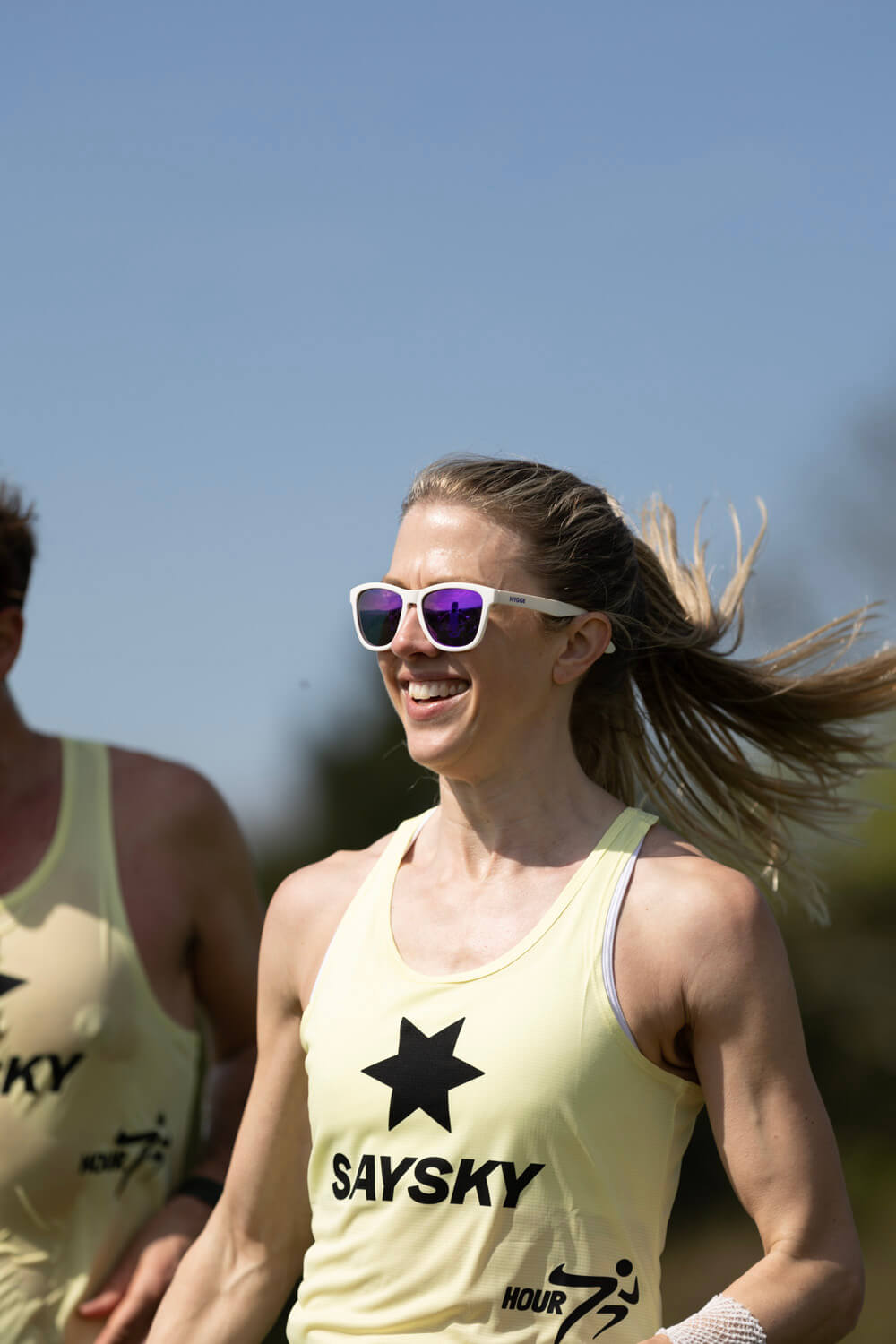
(Hour 7 athlete Caroline Turner in the ultra cool SAYSKY Flow Singlet. Photo: Geoff Lowe)
Wet Towels or Ice Packs
Carrying a small towel soaked in cold water or wrapped around ice packs can provide quick relief during races. Place the chilled towel on your forehead, back of your neck, or wrists to lower your body temperature.
You can also apply ice packs to pulse points like your temples, inner elbows, or behind your knees to cool the blood flowing through these areas.
Keep in mind that these items are all extra weight you will have to carry, so it is important you can re-cool or re-wet the towels as you go or they will become a dead weight.
Shade and Strategic Pacing
When possible, try to seek out shaded areas along the race route and when stopping at check points. Running under trees, bridges, or even alongside tall buildings can provide temporary respite from direct sunlight and reduce the ambient temperature around you.
Additionally, adjusting your pace to a slightly slower, more sustainable speed can help manage body heat build-up and prevent overheating. Race to the conditions. Listen to your body and prioritize keeping a manageable temperature, over a specific time goal.
The effort level is a key factor in how hot an athlete gets in a race so we cannot simply throw ice and cold water at the problem and absolve ourselves of the responsibility.
Conclusion
As a distance runner, mastering the art of staying cooler during events is essential for optimal performance and overall well-being.
By employing a variety of cooling techniques like cold water immersion, ice bandanas, cold drinks, and strategic pacing, you can beat the heat and conquer your running goals with confidence.
Remember to stay hydrated, wear appropriate apparel, and be mindful of your body's signals.
Try to focus on staying cool through these techniques and by managing your effort, rather than relying on cooling down when you get too hot – once you are beyond a critical point it is very difficult to turn the situation around.
